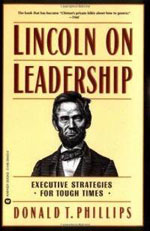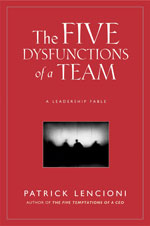 As we start a new quarter, I am reminded that it’s always good to regularly evaluate our goals for 2013. By the end of the second quarter, only 46% of Americans who made a resolution or goal will still be pursuing those goals. In fact, by the end of the year, only 8% of people will have actually achieved their goals.
As we start a new quarter, I am reminded that it’s always good to regularly evaluate our goals for 2013. By the end of the second quarter, only 46% of Americans who made a resolution or goal will still be pursuing those goals. In fact, by the end of the year, only 8% of people will have actually achieved their goals.
Some of our sales leaders at ConMed just returned from a fabulous trip to Hawaii that was awarded because of their hard work and success throughout the year. Many of our Territory Managers and Area Directors tell me that it is their goal for the year to win this prestigious award.
What is your goal for this year? What will it take to make it happen? I have written before about the importance of goal setting—how to make goals, track them, and hold yourself accountable to them. This week I would like to discuss a very simple strategy to help you stay focused on your goals or even to help you get back on track in pursuing them.
To keep our goals in sight and move forward towards achieving them, we need to see the big picture and take care of the nitty gritty. We need to look at our goals from both “What” and “Why” perspectives.
In other words, goals should be thought of in abstract, big-picture terms and then need to be brought into realization with concrete and specific action items that must be completed. We need to think about our goals in “Why” terms to get energized and stay motivated, and we also need to think about our goals in “What” terms when we are dealing with difficult, tedious, or unfamiliar aspects of reaching our goals.
For example, one of my goals this year is to complete a marathon. Before my decision to sign up for a race, I had never completed any running race—let alone run longer than five miles. The big race day is May 19 in downtown Denver, where I will complete 26.2 miles!
This past weekend, the “Why” and “What” came into play for me. Every week, my training program dictates that I need to complete a minimum of four runs, where the last run of the week is the “Saturday Long Run.” Each week I add more distance to that long run. My long runs started at five miles, and this past weekend I completed my longest run ever—17 miles! The night before this run, I did not sleep well and started feeling like I was coming down with something. As I dragged myself out of bed Saturday morning, I really did not want to hit the pavement for the next three hours.
I started thinking about my “Why” for running a marathon: only 1% of the population has ever completed a marathon, and I want to prove to myself that a non-runner can do it. The improvement of my overall fitness also plays into the “Why” for me with this particular goal. Finally, I have told everyone I know that I’m going to run a marathon, and the thought of telling people that I didn’t do after all it is frightening and unimaginable.
So I got myself out the door and started my long run. About an hour and a half in and not quite halfway done, everything about my run was not going well. My back and legs were sore, I had no energy, and my motivation was at a low point. At that moment, the “Why” wasn’t helping, and I decided to focus on the “What.” I turned my focus completely to my footwork, breathing, and the music playing on my iPod. I would not let myself think of anything else but the physical requirements to keep me moving forward. And it worked! I finished my long run, and I’m ready for next week when I need to run 18 miles!
As the example above illustrates, thinking about your goals with a “Why” mindset will help you get moving and motivated, whereas the “What” mindset leads you to focus on the specific actions you need to complete in order to reach your goals.
When looking at your goals for this year, it’s great to daydream and get motivated. However, the road will inevitably become difficult and will require you to push through. How will you respond when an evaluation does not go well? Or perhaps when you lose an account or a big deal? Will you get up again and display the model behaviors that require focus and tenacity?
The two characteristics I have witnessed in all of our award winners at ConMed is that 1) they know their “Why,” and 2) in times of tribulation, they are able to focus on the “What” that is required to keep them moving towards their goals.
As we all begin a new quarter, keep your eye on the prize and fight, fight, fight for what is yours.
Remember that you and only you are responsible for your results.
As Mario Andretti has been quoted, “Desire is the key to motivation, but it’s determination and commitment to an unrelenting pursuit of your goal – a commitment to excellence – that will enable you to attain the success you seek.”
Stayed tuned in the weeks ahead for a new series! I have learned some great life lessons (that can also be applied to the pursuit of both personal and professional success) through training for my marathon, and I am excited about sharing them with you!


















Sean. Great post. Timely. Just picked up my heart rate monitor and a new pair of running shoes. Last summer, when I started running for the first time in my life I didn’t pay much attention to a training routine. Looking forward to more posts about your running. Enjoyed the parallels with success & sales.
Thanks Chris! Good luck with the running! I would also suggest the Nike GPS watch as it works with the Polar heart rate monitor. You can get it on Amazon for $150. It works great!
Sean good stuff as always. I coach clients that goals mean nothing without a plan and commitment to that plan. A goal without a plan and commitment to that plan is just a dream. I love what you did announcing your intent to run a marathon. In my training sessions on goal setting we have each person get up and announce their goals. This acts as an accountability factor for that person. Last thing you want someone asking you is “how is that training for a marathon going”, when you haven’t kept yourself accountable to train.
Secondly, one thing you might ask all your salespeople to do is get an accountability partner that they check in weekly with each other and set up-front contracts on how they will keep each other “accountable“ in the plan of their goals.
Pingback: Is Your Mindset Holding You Back?
Pingback: Achieving the Extraordinary